First a disclaimer: As you all know data link weather is for situational awareness only. So please do not bet your life on it!
1) Convective Cells
Now in the summer for the IFR pilot the main goal is to avoid convective weather which comes with some very unpleasant or even dangerous turbulences. The radar return shows the amount of water (or ice) in the atmosphere. Fortunately we do know that more water in the atmosphere will very often correlate with strong vertical air movements. So if we see cells on the radar images I suggest to stay way away from them. Usually even flying next to the green color border of a bad thunderstorm cell is a bad idea. If there is lightning in there (magenta corsses) that makes it even more obvious.
A small cell I saw on the way from Bremen to Berlin. ATC wanted me to the north and I wanted to go to the south  A Lufthansa airliner had a heated discussion with ATC as they wanted to send him straight through in order to avoid a military area…
A Lufthansa airliner had a heated discussion with ATC as they wanted to send him straight through in order to avoid a military area…
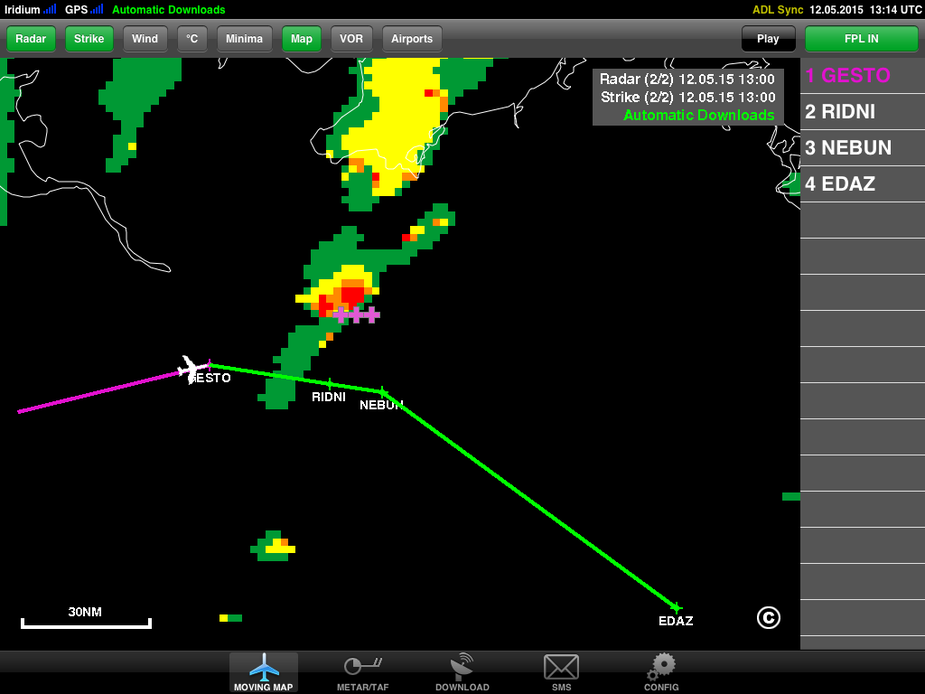
Several cells which came in while we did airwork.
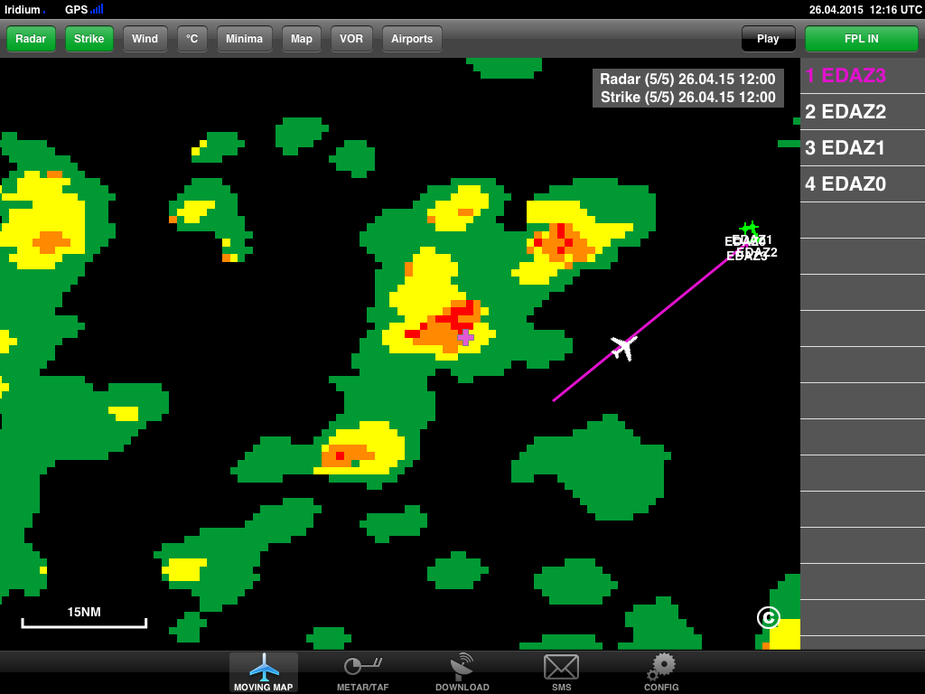
A few minutes before I did the screenshot I was able to investigate the lower of the three cells with the on board radar. No way I would fly through there…

Finally just to give an example this is the thunderstrom(line) which caused a little tornado in northern Germany last month:
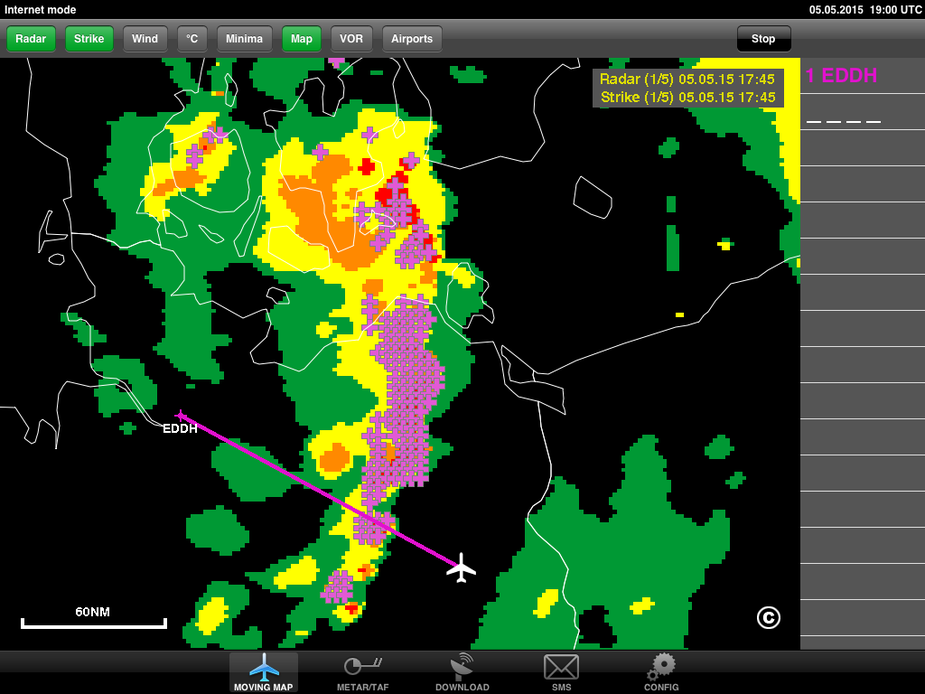
2) Frontal weather
If flying through widespread frontal weather without convection the structure of the radar image will look differently. Airframe icing aside you can fly through most of it. You might wash your plane but usually it will not be nearly as bad as convective weather. Here flying through green, yellow and maybe even orange stuff might be ok but the flight will be nicer the more you can avoid. If your plane flies high you might even by able to fly in the sunshine over yellow radar returns.
Here are two images from my flight Sywell to Berlin catching up with the frontal weather which went over the Aero UK show area Sunday morning. I was able to fly over the whole thing at FL200.
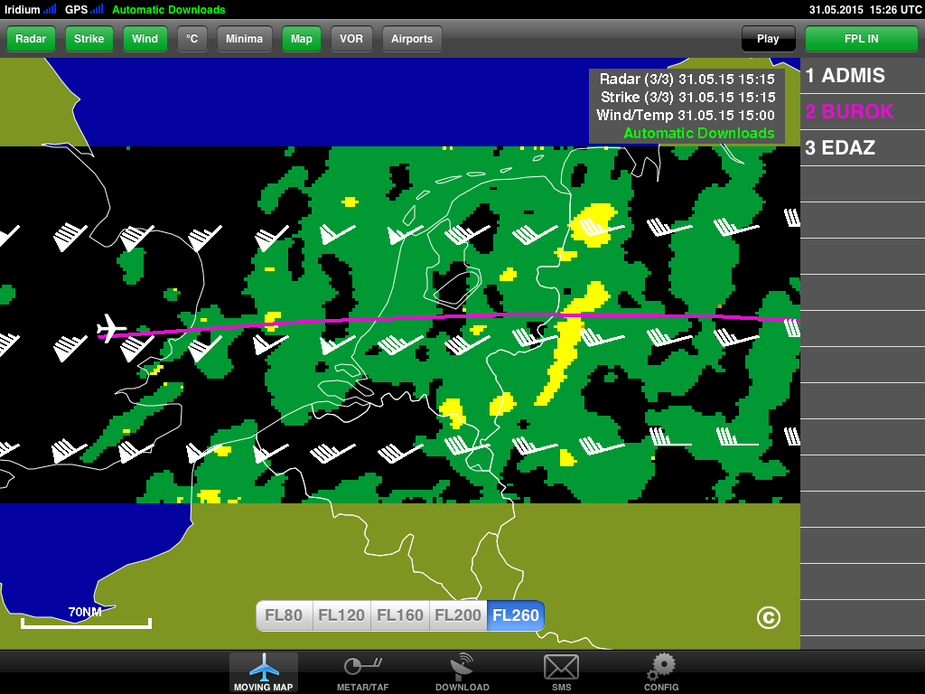
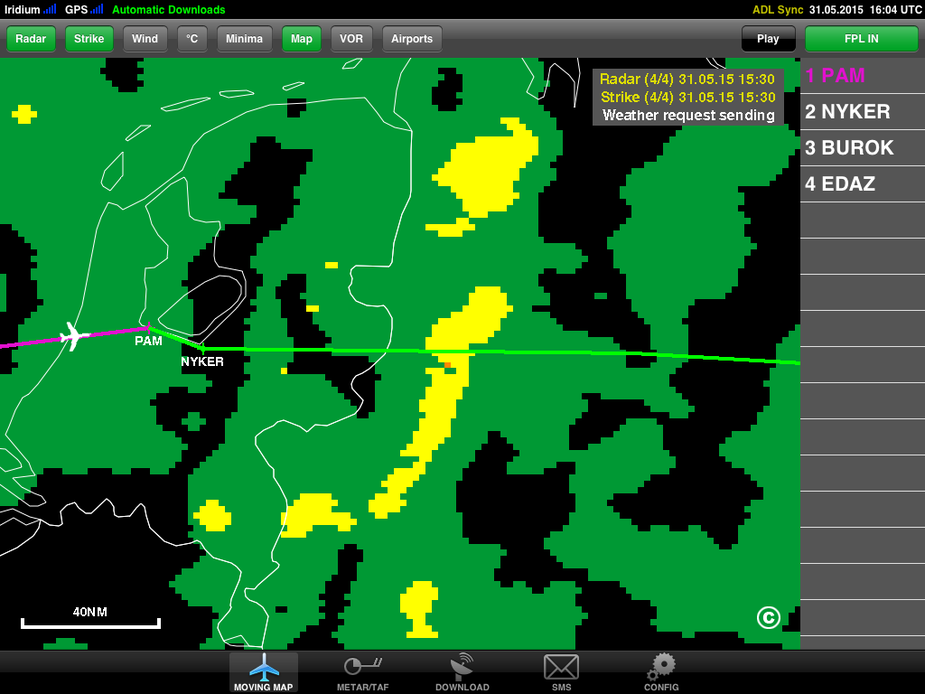
3) Rain and snow showers
If you have to reach a VFR destination you can follow how the precipitation moves. Here even green radar returns can be enough so you can not land at an airfield VFR. Then it pays of to observe the precipitation move and judge if this is just temporary or if it will get worse so you have to divert.
Here I was appraoching my homebase from the south. A low level rain was just moving over the airfield moving to the east. I I knew if I can not make it holding a few minutes would have solved the issue as the rain was moving away.
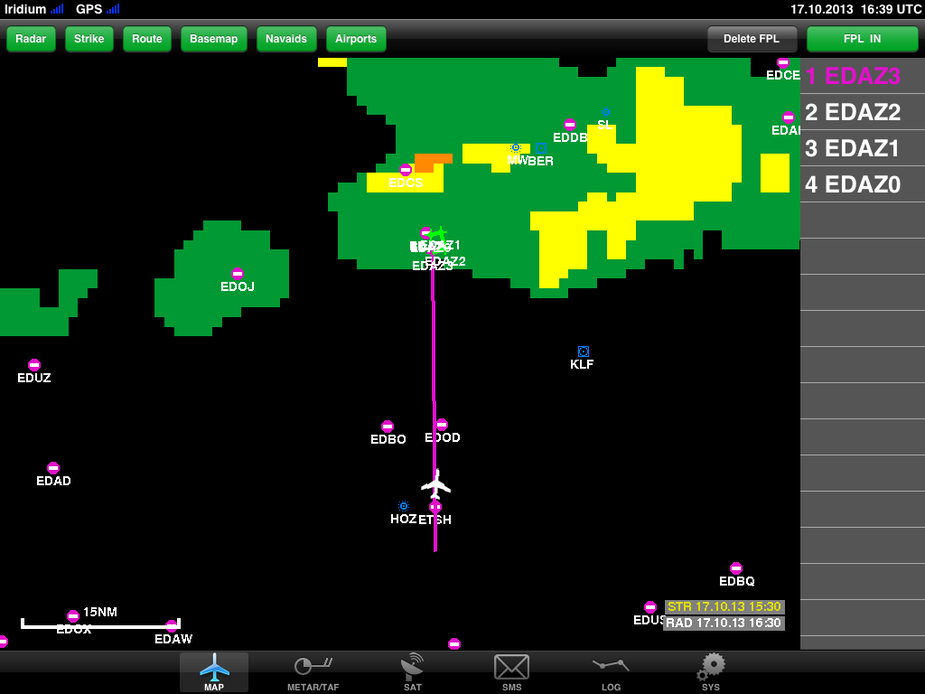
Flyer59 wrote:
Maybe I’d do it if I was a professional pilot and with the help of onboard radar, I don’t know.
Professional pilots are taught to avoid thunderstorms by a minimum of 20 nm.
How do professional pilots recognize thunderstorm ?
(I mean what are the criteria on the weather radar: color ? gradient ? something else ?)
Does the green usually indicate the rain is low level.
Yes as with airborne radar, the colour indicates the intensity of the precipitation. The more the signal bounces off the (liquid) water, the closer to red you get.
Just rereading your post, i want to clarify that by level I mean intensity. The radar picture from above says nothing about the altitude of the rain clouds.
The radar picture from above says nothing about the altitude of the rain clouds.
From below you mean. German DWD’s radar stations perform a vertical sweep:
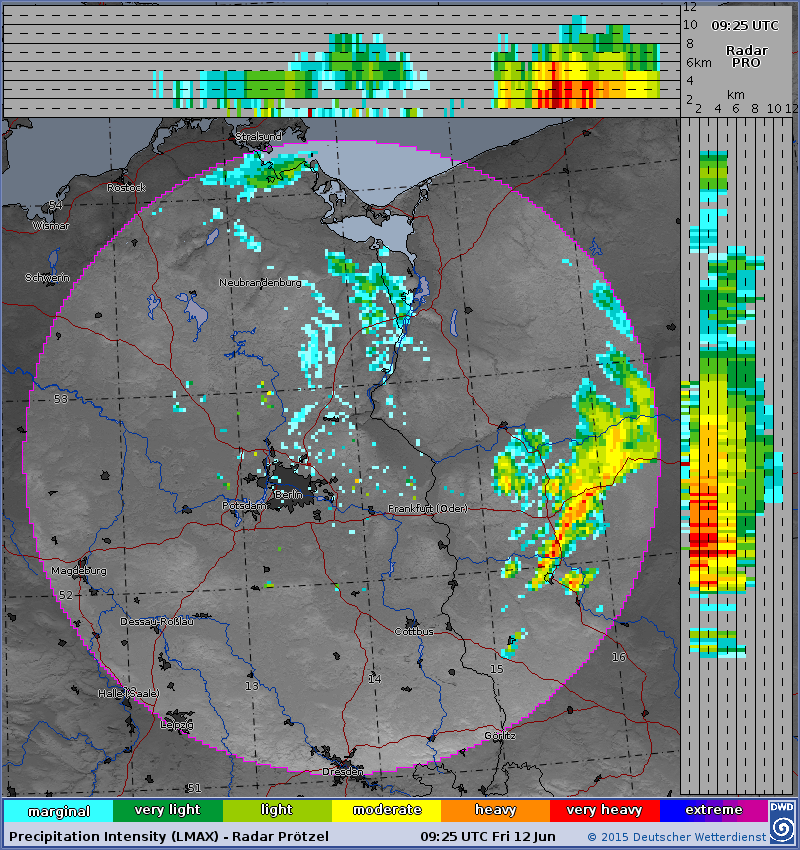
Ordered ADL120, we’ll see how it performs 
From below you mean.
Well no. The way the data is presented is from above. Vertical sweep is possible but the ADL120 does not show it.
Emir,
i use it for 5 weeks now … it is great, i a sure you will like it.
Flying to Spain next month – coverage all the way from takeoff to landing 